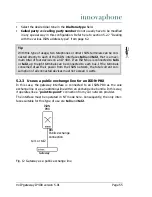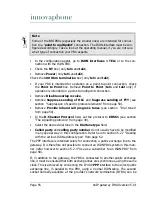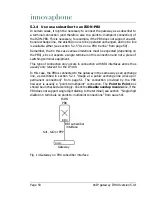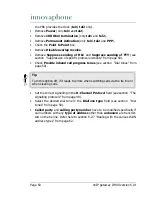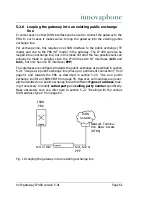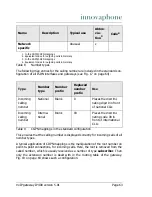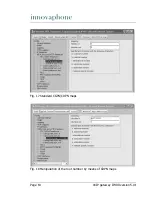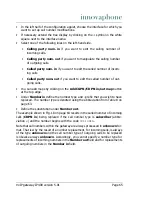
Page 50
VoIP gateway IP400 version 5.01
Single digit dialling on terminals on point-to-multipoint connec-
tions
Normally, single digit dialling (
overlapped sending
) is not used to call terminals
(i.e. devices in TE mode) on point-to-multipoint connections. Under certain cir-
cumstances however, it is possible for gateways to be connected to a PBX system
in precisely this mode and then also support incoming single digit dialling (
over-
lapped receive
). In this case, an incoming
SETUP
message is answered, as
required in the standard, with a
SETUP_ACK
message. Some PBXs however do
not expect this sort of message from terminal equipment and terminate the call
at this point. In such a case, the
Disable overlap receive
setting prevents the
gateway from answer the incoming
SETUP
message with
SETUP_ACK
.
Suppression of specific protocol elements
Not all ISDN implementations are prepared to receive certain
information
elements
(so called
IE
s), which conform to the standards. Such IEs can be cre-
ated, for example, when linking up different PBXs or transmitting H.323 calls to
an ISDN interface and vice-versa.
If malfunctions are caused by the transmission of certain IEs, the gateways can
be made to remove such IEs from the transmitted messages.
Table 7
Suppression of the transmission of
information elements
Dial tones
The gateways are able to generate call progress tones at the ISDN interfaces (dial
tone, ring tone, busy tone).
This is done for outgoing calls from the gateway in the direction of the calling
party, whenever the called party does not generate any dial tones of its own.
Setting
Effect
Suppress sending of HLC
No
high layer compatibility information
elements
are transmitted.
Suppress sending of FTY
No
facility information elements
are
transmitted.
Tip
Dial tones can be identified by the
inband information
, which is signalled
by the called party.




















